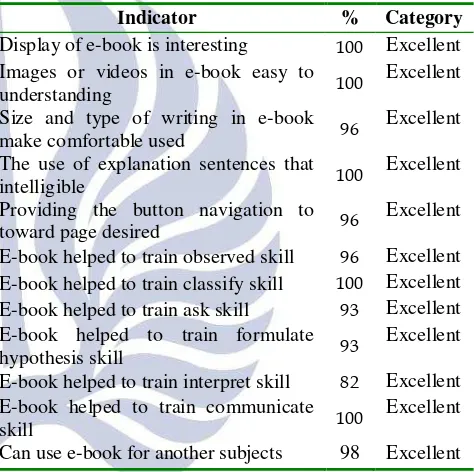21463 25480 1 PB
Bebas
7
0
0
Teks penuh
(2)
(4)
(5)
(6)
Gambar

Dokumen terkait
And the curriculum stated that out of the four skills, listening, speaking, reading, and writing, the main emphasis is on reading skill because it is believed that acquisition
So it can be concluded that digital book media based on contextual learning can be used as a medium for students of senior high school.. Keywords: Digital Book,
Research conclude that android mobile learning using app inventor is feasible to train high school student’s science process skill because it valid (validity of learning